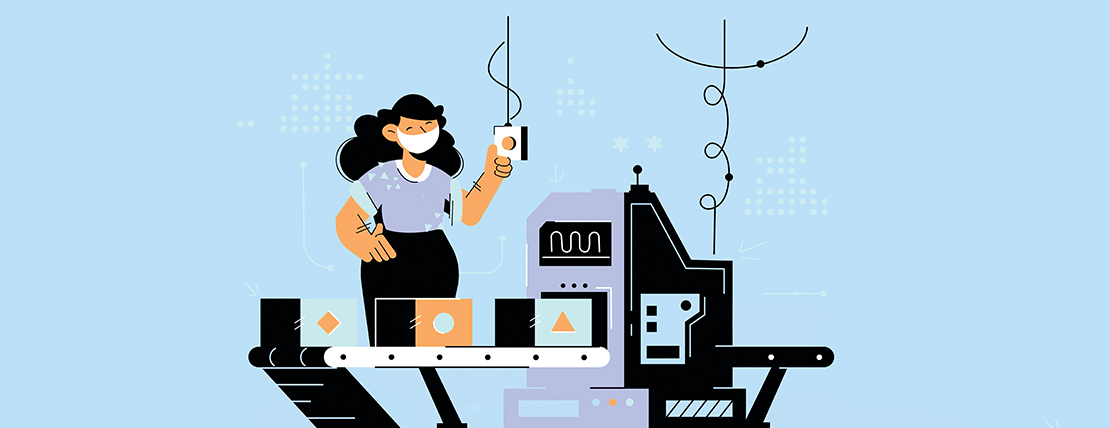While there appeared to be signs of the COVID-19 pandemic slowing down in late summer and early fall of 2020, Europe and the United States are currently in the midst of a “second wave” of infections that’s led to new government-imposed lockdowns and restrictions.
As this occurs, adhering to safe practices such as mask wearing and social distancing at workplaces remains important. Another way businesses are combatting the spread of the virus is through the increased use of robotics and automation. While many companies that operate in the manufacturing, hospitality and health-care space already relied on such technology for improved efficiency and cost-saving measures, those efforts have been accelerated in the name of health and safety.
Mickey Chichester, shareholder and co-chair of the robotics, AI and automation practice group at Littler Mendelson, said there’s a wide range of uses for the technology being deployed in these industries. For manufacturing, there are “co-bots,” which turn a two-person job into a one-person job with the help of a co-bot to limit contact, as well as GPS-enabled fork trucks that move inventory. Chichester also noted the ability for hotels to roll out bots in lobbies that remind guests to socially distance and deliver bags and room service.
“I think you’ve seen more experimentation and a more concerted effort to utilize the technology,” Chichester said. “Using robots or automated technology to conduct cleaning, particularly in the health-care industry, there’s been a lot of reports about hospitals bringing in robots that sterilize a room. I think that’s increasing at this point.”
While this advanced technology is proving vital during the pandemic, its increased use is certainly not without concern. While COVID-19 has been a health crisis, it’s also led to an economic crisis in most places around the world, particularly so in the U.S.
The unemployment rate reached nearly as high as 20% in the early stages of the pandemic, and while that number has fallen back below 7%, there are still millions of Americans who had jobs in February and no longer do. Thus, the increased reliance on machines to do jobs formerly carried out by humans does little to calm concerns about future job losses. A recent paper by economists at MIT and Boston University projected that robots could replace as many as 2 million more workers in manufacturing alone by 2025.
“This pandemic has created a very strong incentive to auto- mate the work of human beings,” Daniel Susskind, a fellow in economics at Balliol College, University of Oxford, told Time magazine. “Machines don’t fall ill, they don’t need to isolate to protect peers, they don’t need to take time off work.” Chichester has a differing viewpoint from the doom and gloom espoused by some economists. While it’s true that jobs will be automated and the pandemic has likely accelerated that process — 37% of organizations have accelerated their investment in automation technology — it’s also likely that this technology will create jobs that didn’t previously exist.
“I don’t know that robots and automation are going to eliminate swaths of jobs; however, there will certainly be a need and opportunity to retrain and reskill employees,” Chichester said.
“When technology comes into the workplace, companies will need people to install programs and ensure automated technologies run smoothly. There is going to be huge growth in that regard. Ultimately, I think the discussion needs to focus on how we retrain and reskill the workforce to work in concert with technology that’s going to be adopted into the workplace.”
“Reskilling and upskilling the workforce will be critical in addressing the changing work environment.”
“When technology comes into the workplace, companies will need people to install programs and ensure automated technologies run smoothly. There is going to be huge growth in that regard. Ultimately, I think the discussion needs to focus on how we retrain and reskill the workforce to work in concert with technology that’s going to be adopted into the workplace.”







